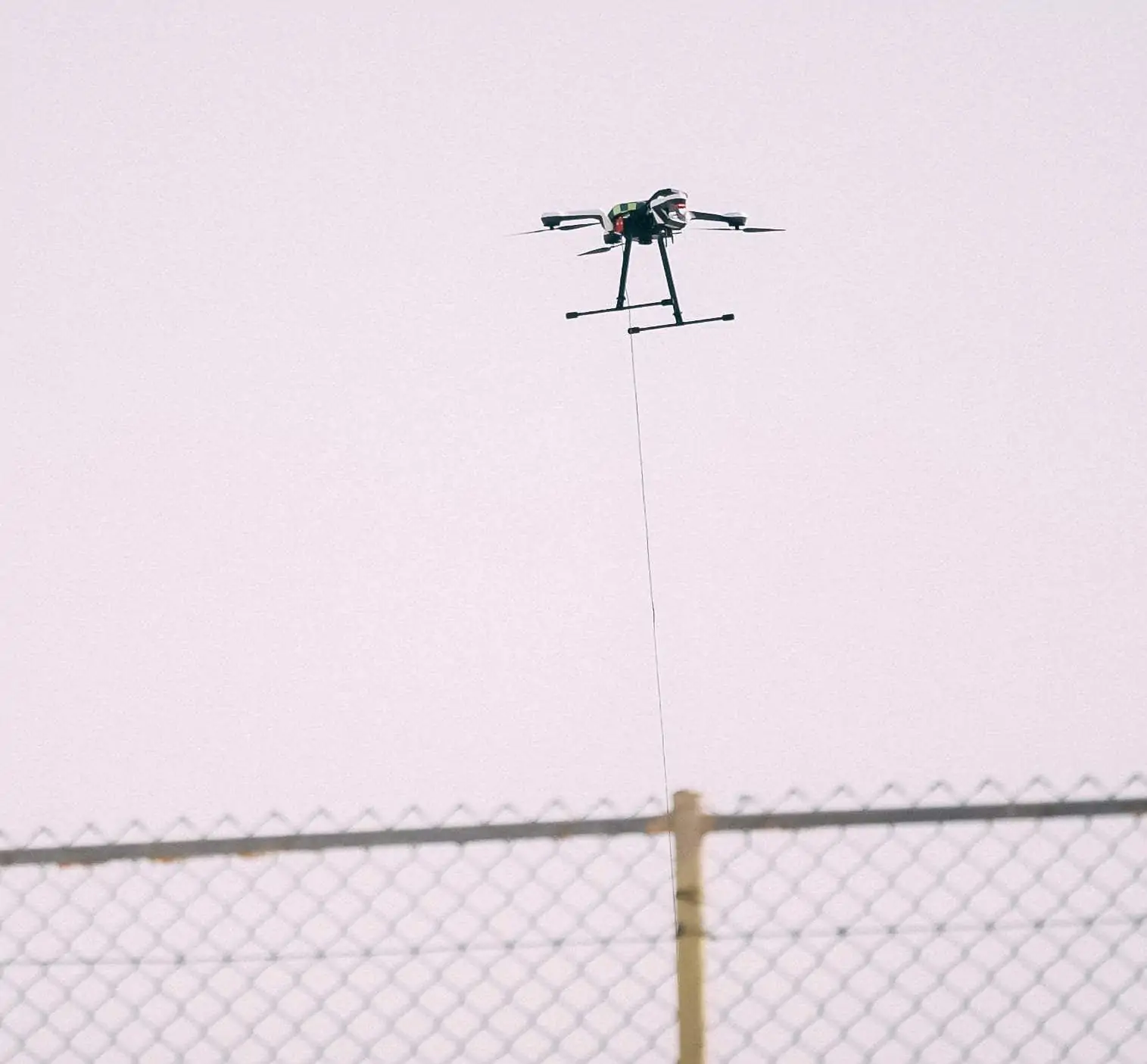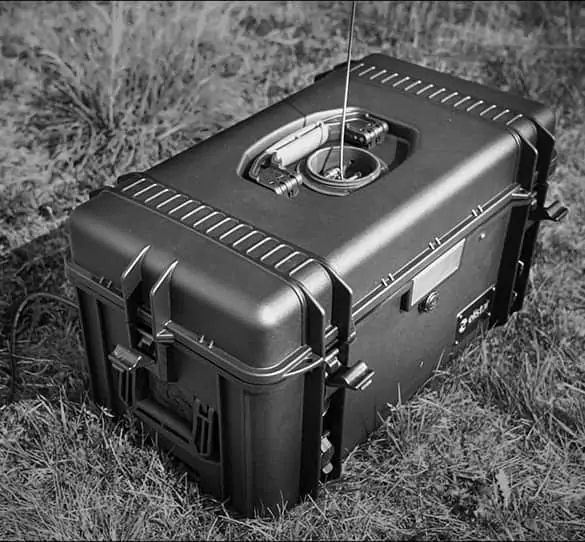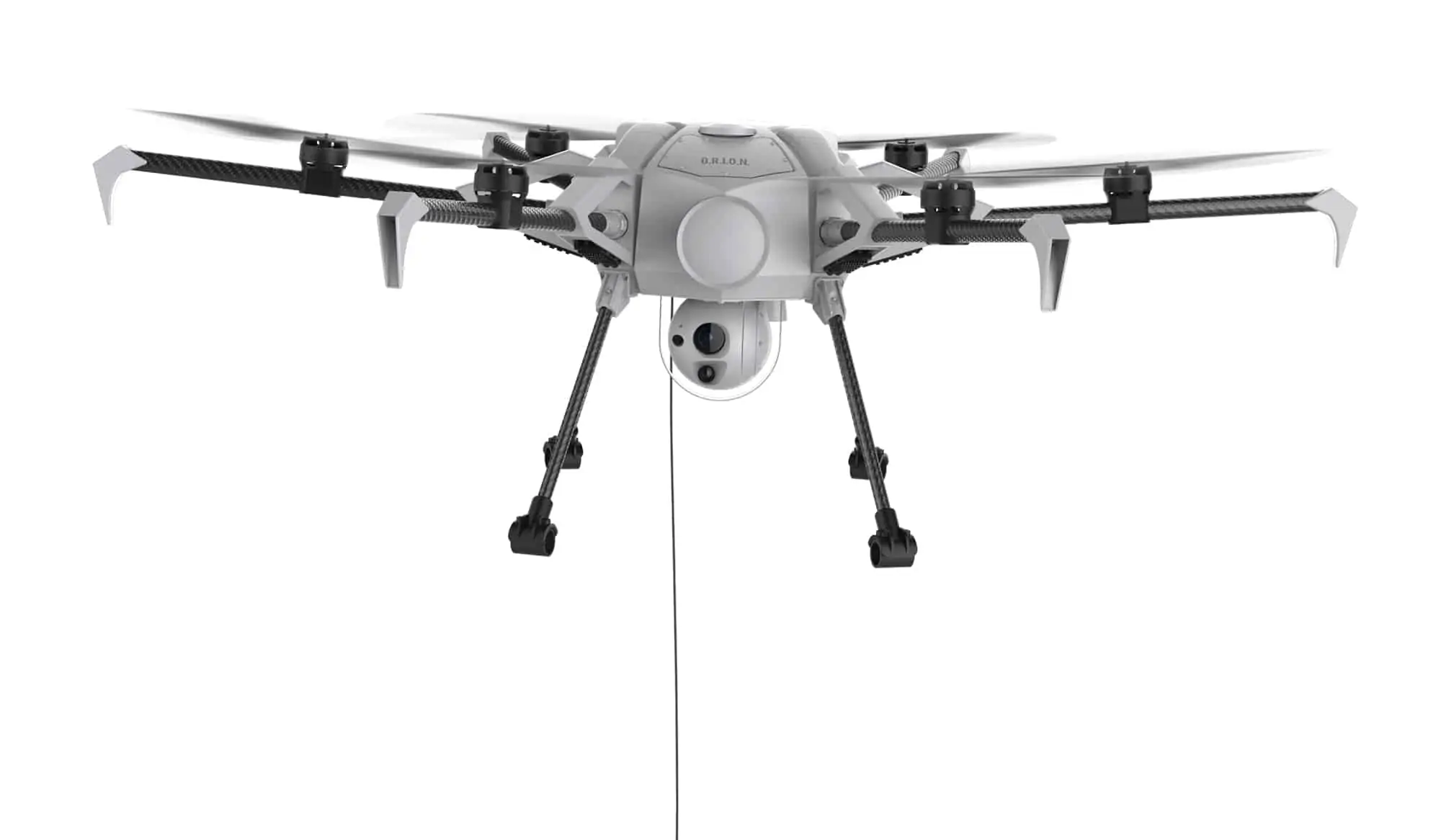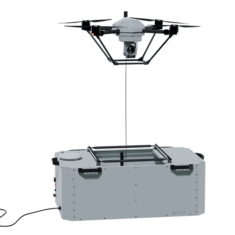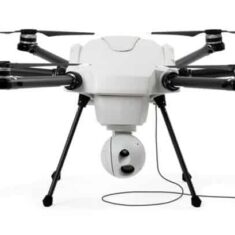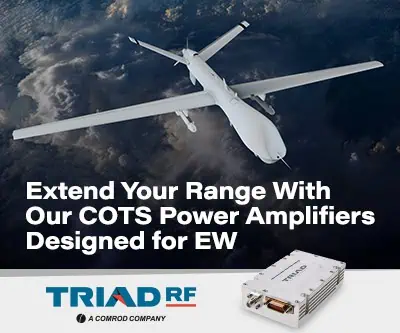Tethered Drones and Unmanned Aerial Vehicles
What is a Tethered Drone System?
A tethered drone system uses a permanent physical link, in the form of a flexible wire or cable, to provide power and communications to a UAV (unmanned aerial vehicle). Due to the inability of fixed-wing drones to hover, UAV tethered systems utilize quadcopters or other multirotor drones, as well as aerostats. They are used for situations where the required flight endurance is greater than that of the free-flying drone, and only a minimal operating area is needed.
Drone tethers typically provide up to a few hundred metres of operational altitude, with the limiting factor being the ability of the drone to support the weight of the tether. Drone tethers may be made of aramid or other lightweight synthetic materials to provide strength, with copper or plated copper for power conduction and optical fibre for data and communications. The system may be based on the ground or on a vehicle.
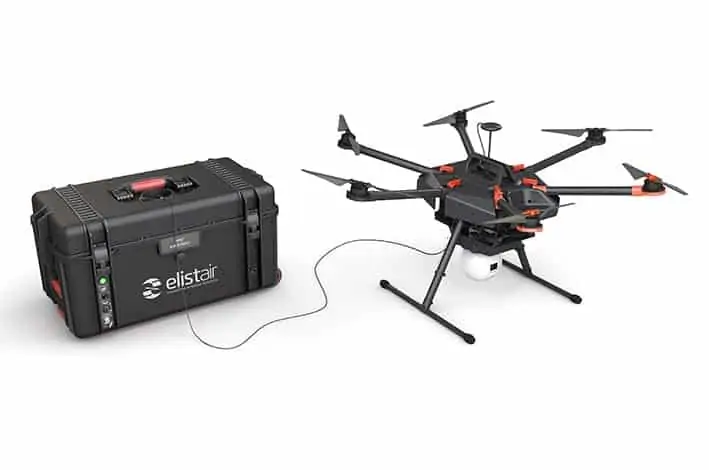
Elistair Safe-T Tethered Drone System
Ground Stations & Tethered Drone Technology
The ground station of a UAV tether system will supply power to the drone and its payloads from a connection to mains electricity, or to a generator. There may be a battery backup in case of outages in the main power source.
The tethered UAV stations may include smart power management, as well as automated tether winding with GNSS positioning to maintain flight ceiling and position even in adverse weather conditions. Status monitoring, health checks and fail-safe procedures for the unmanned aerial system may also be built in.




